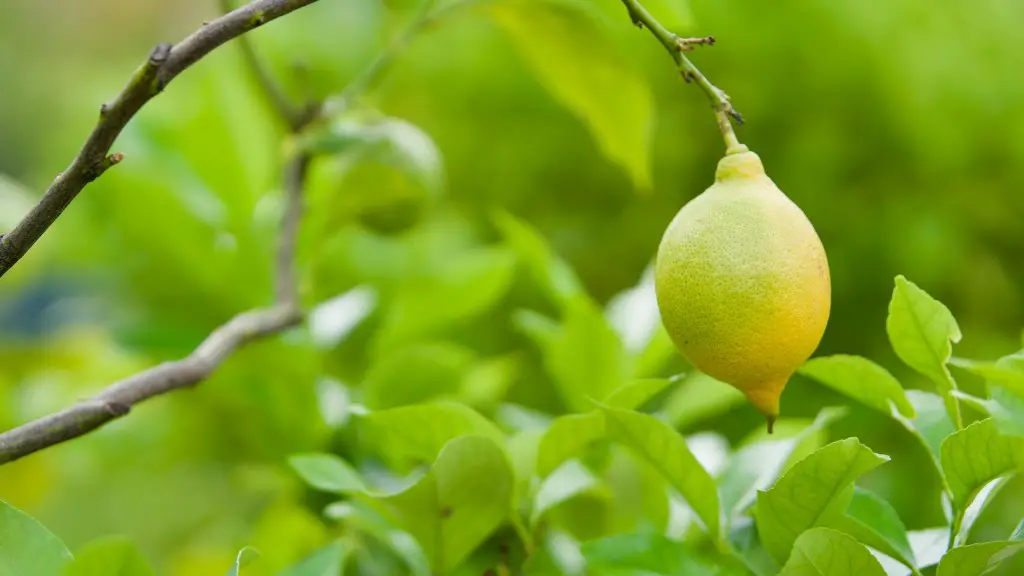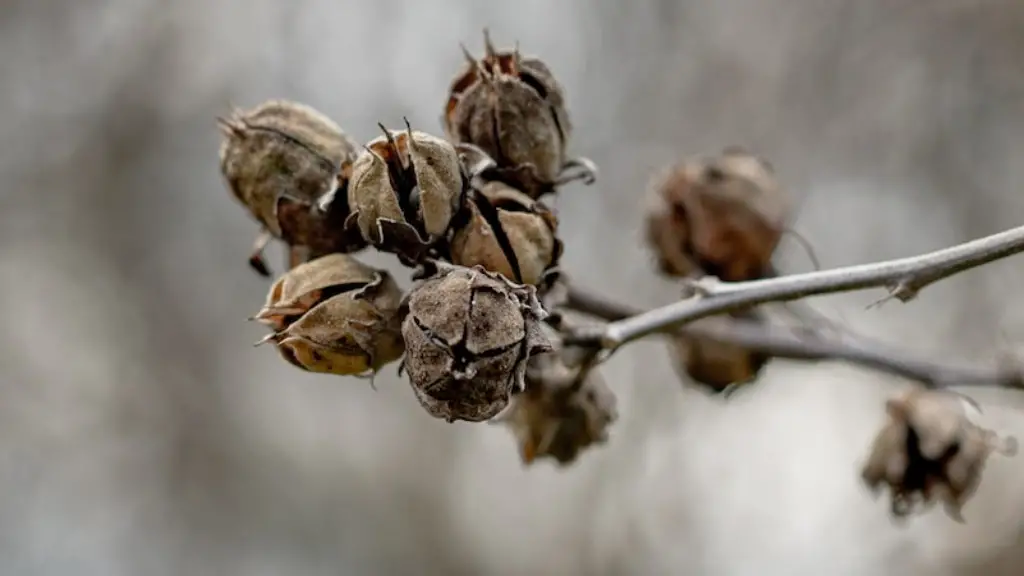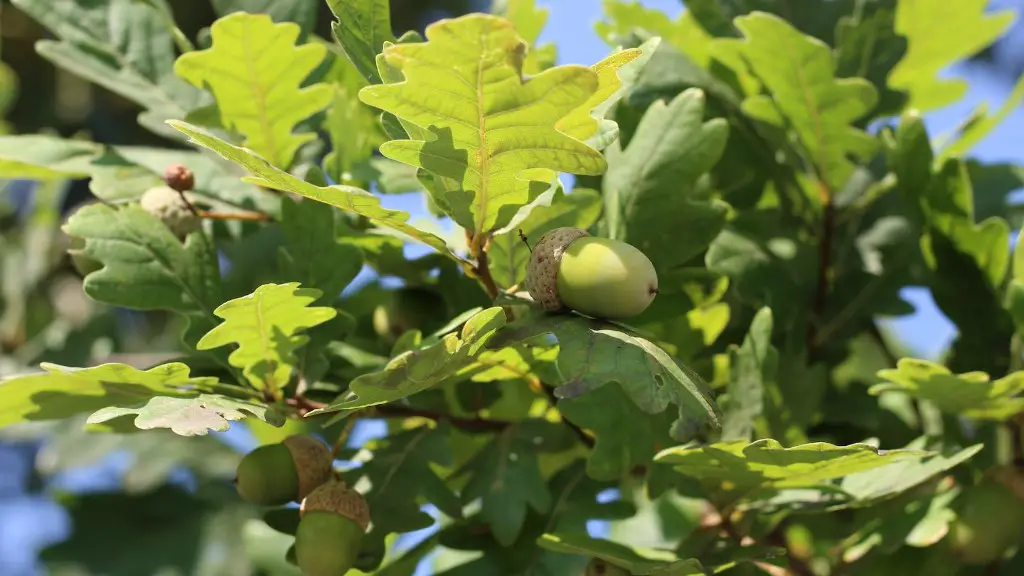It is quite possible for a lemon tree to bear fruit, with a few conditions. Firstly, lemon trees require adequate sunlight and temperatures that are not too warm or too cold; some of the best areas for lemon tree cultivation are the Mediterranean, California, Texas, and Arizona. Additionally, the soil should be well-draining, highly-alkaline soil; adding lime to the soil can help, as well.
In addition to these environmental conditions, a lemon tree also needs to be properly fertilized. Fertilize a lemon tree two or three times a year with a balanced fertilizer, containing nitrogen, phosphorus, and potassium. You should also add a small amount of Epsom salts or magnesium sulfate to help the trunk or branches flourish. Lastly, prune the tree periodically to open up the canopy to allow more sun and air to penetrate.
However, the sustainability of the tree and its ability to bear fruit depends largely on how well you take care of it. Water the lemon tree weekly, and remember to use a fertilizer with potassium in it as part of your regular routine; keep an eye out for signs of pests and diseases, as well. In addition, a tree should be replanted once in a while, to ensure that it has enough space, nutrition, and water supply.
Though there are a variety of variables that can impact whether a lemon tree will produce fruit, the answer is usually positive. With the right care, a well-cared for lemon tree can provide a sustainable harvest for years to come. But, bear in mind that it could still take a few years before the tree will bear its first fruit.
Introducing More Sunlight
One of the key elements to a successful lemon crop is providing the right amount of sunlight. Depending on where you live, you might need to give your lemon tree some extra exposure to sunlight. Try to simulate the Mediterranean climate by choosing a location with full sunshine and allowing plenty of air flow around the lemon tree in order to protect it from heat stress. Gently prune away any branches blocking the sun, while making sure its trunk is securely staked.
If your garden receives partial or dappled sunlight, try positioning the lemon tree in a location that will expose it to more direct sunlight. Also, consider adding a few strategically placed mirrors to double the amount of sunlight that your lemon tree receives. If it does not have adequate sunlight exposure, expanding the growing season will be challenging.
Do not worry if you live somewhere with long winter months. Training your lemon tree to take advantage of the short winter days is still possible. When the day’s solar intensity is adequate, use a reflective insulation to capture light and direct it in the direction of the lemon tree.
Addressing a Lack of Fertilizer
If you are having trouble growing a successful lemon crop, it could be that there is a lack of fertilizer in the soil around your tree. High quality fertilizer with nitrogen, phosphorus, and potassium is essential for encouraging the tree to thrive and produce healthy fruit.
It is best to use a slow-release fertilizer for your lemon tree. This type of fertilizer slowly dissolves and releases nutrients into the soil, over a period of several months. This ensures that the soil stays adequately nourished, without overwhelming the roots. Discontinue fertilizer use in the winter months, in order to give the tree time to rest during this season.
Organic fertilizers, such as animal manure and compost, are also beneficial for lemon trees. If you are using an organic fertilizer, make sure to spread it across the soil before a storm, in order to give the tree some extra nutrition. Also, consider adding mulch to the soil to help with water penetration and reduce the amount of noise and soil temperatures.
Providing Protection from Pests and Diseases
It is not unheard of for pests and diseases to affect the overall health of your lemon tree and its production of fruit. The most common issues associated with pests and disease include poor soil drainage, poor fertility, and inadequate sunlight. To protect your lemon tree from these issues, it is important to inspect the tree regularly for signs of trouble.
If you see any signs of damage, immediately remove any affected branches or leaves from the tree. Also, consider using organic pest control and natural means of disease prevention. For example, predatory insects, such as ladybugs, can help to control an infestation of aphids. Additionally, regular pruning of the branches helps to open the canopy to the sunlight and enhances the air circulation.
Finally, do not underestimate the power of a powerful mulching system. Mulch helps to reduce the temperature of the soil and hinder the growth of weeds and other unwanted plants. Not to mention, mulch can also provide additional nutrition to your lemon tree and reduce the amount of water loss due to evaporation.
Using the Right Amount of Water
It is important to provide your lemon tree with an adequate amount of water in order for it to produce healthy fruit. However, keep in mind that over-watering the tree can be detrimental and cause the tree’s roots to rot. For best results, use a hand-held water nozzle with a spray pattern that reaches the base of the tree.
If you live in an area with limited water supply, consider investing in a drip irrigation system. A drip system is designed to ensure that water reaches the roots of the tree and does not evaporate, providing more efficient and effective use of water. In addition, it is important to time your irrigation wisely; try to give your lemon tree an early morning drink, allowing the water to infiltrate and hydrate the tree before midday.
For outdoor lemon trees, rain can help to provide an additional hydration boost. You can also provide additional protection from water loss due to evaporation by adding a thick layer of mulch around the tree. This will act as a natural insulation, allowing water to soak longer into the tree.
Examining Soil PH Levels
If your lemon tree is failing to thrive, it could be due to soil pH levels that are off balance. Generally speaking, the ideal pH for citrus trees is between 6.0 and 6.5. While you can use a soil test kit to get the exact pH of your soil, you can also enrich its alkaline quality with lime dust. Before applying the lime dust, make sure to water the soil. This will help the lime dust to penetrate the soil more easily and quickly.
It is also important to consider the other types of nutrients in the soil. Compost is an excellent source of organic matter that provides essential nutrients and minerals to your tree. Additionally, try introducing fertilizers that are specifically formulated for citrus trees, such as magnesium and sulphur. These will help to promote growth and increase the yield of your lemon tree.
Organizational Redesign
Sometimes, a lemon tree might benefit from a complete organizational redesign. This involves removing the tree from its existing pot and replanting it in a larger pot. Not only does this allow the tree to spread its roots further, but it has other benefits as well. For instance, having more room to grow can help to increase the tree’s root strength, leading to better nutrition and water absorption.
When it comes to re-potting your lemon tree, start by choosing a pot that is at least twice as big as the original pot. For soil, select a blend of equal parts peat moss and compost. Be sure to spread a layer of gravel at the bottom of the pot, then fill it halfway with the soil. Place the lemon tree in the center of the pot, making sure the roots are fully spread out and secured. Afterwards, top off the soil and pack it down.
Make sure to keep the roots moist during the re-potting process and water your tree regularly, once it is inside the pot. Additionally, it is best to apply a balanced liquid fertilizer, with nitrogen, phosphorus, and potassium, to the soil. This will provide an extra boost of nutrition for the lemon tree.
Total Tree Transformation
Total tree transformation is the process of transforming the lemon tree from a dormant, unproductive tree to a thriving, healthy lemon tree. This process can involve removing dead or diseased branches, adding fertilizer, providing more sunlight and water, and much more. It is wise to use a holistic approach to this process, in order to ensure the maximum benefit for your lemon tree.
Start by pruning away dead or diseased branches and clearing the canopy of any obstructions. This will help to facilitate greater air flow and an increase in sunlight. Additionally, offering extra nutrition to the tree via fertilizer or compost could help to improve its health and stress resistance.
Be sure to use the right type of fertilizer; one that is balanced and specifically formulated for citrus trees. It is important to provide enough, but not too much water; try to find a balance that works for your lemon tree throughout the season. Lastly, try to inspect the tree for signs of pests or disease, in order to maintain its health and production of fruit.





